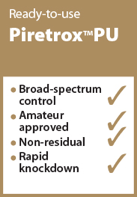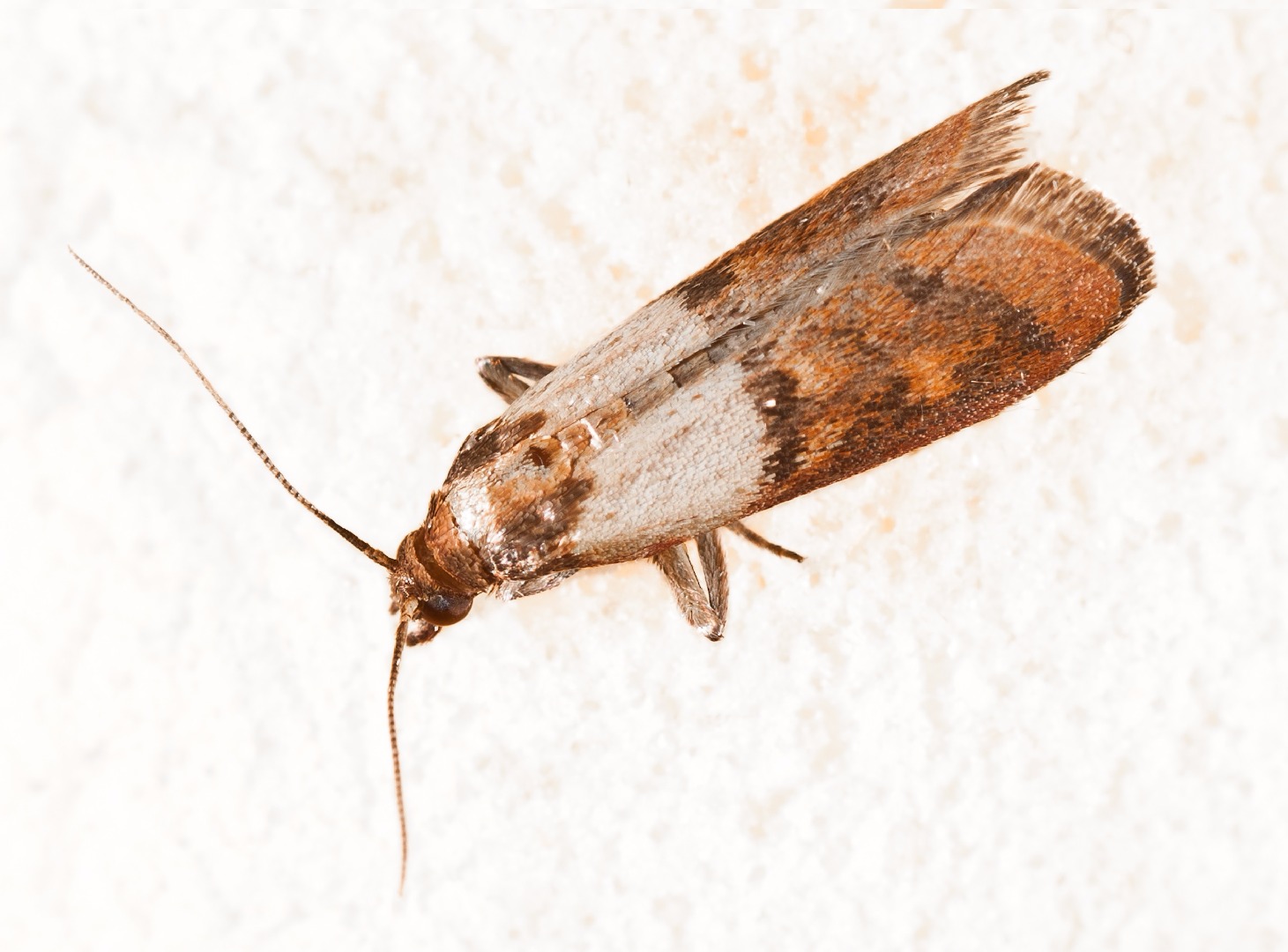Mediterranean flour moth
(Ephestia kuehniella)
The Mediterranean flour moth (also commonly known as the mill moth) has been the most common pest within British flour production for almost a century. They can often be found in bakeries, butchers, flour stores and flour mills in which their larval silk production can cause major product contamination, as well as blockages of machinery and product spoilage.
Life cycle:
Complete metamorphosis
| Egg | An adult female Mediterranean flour moth will lay around 350 eggs on or near to a food source. |
| Larva | White in colour with darker grey spots, the larva can grow up to 16 mm in length. Once hatched, larvae begin feeding and producing silk webbing around food, which can cause blockages in machinery or product spoilage |
| Pupa | The pupae is the final stage before metamorphosis into the adult. Pupae is yellow and red in colour and development lasts approximately 16 days. |
| Adult | Once the Mediterranean flour moth has reached maturity and turned into an adult, it lives for only around two weeks, being predominantly active in the early morning and late afternoon hours. |
Habitat
The Mediterranean flour moth is often found in flour mills and stores, as well as bakeries, butchers and other shops.
Recommended Products
Click icons for more information
References
BPCA (2015) The British Pest Manual: A reference manual for the management of environmental health pests and pests of the food industry, 2015 edn., Derby: BPCA.
Prime Pest Control (2015) Mill moth infestation [Online] Available at: https://primepestcontrol.co.uk/mill-moth-treatment-and-control-london/ (Accessed: 20/2/2017).
Manchester Pest Control (2017) Mill Moth [Online] Available at: http://manchesterpestcontrol.co.uk/mill_moth_content/mill-moth/ (Accessed: 20/2/2017).






